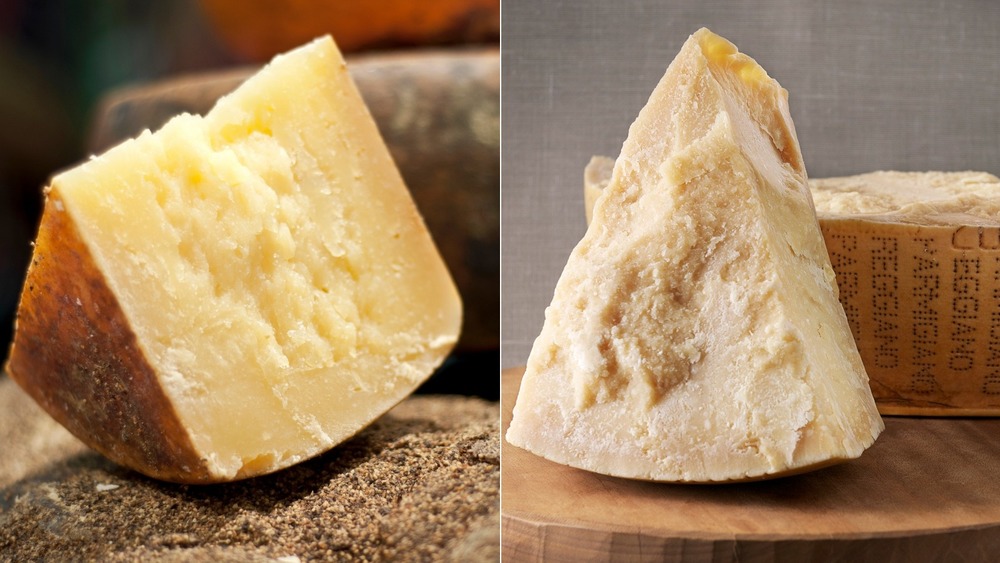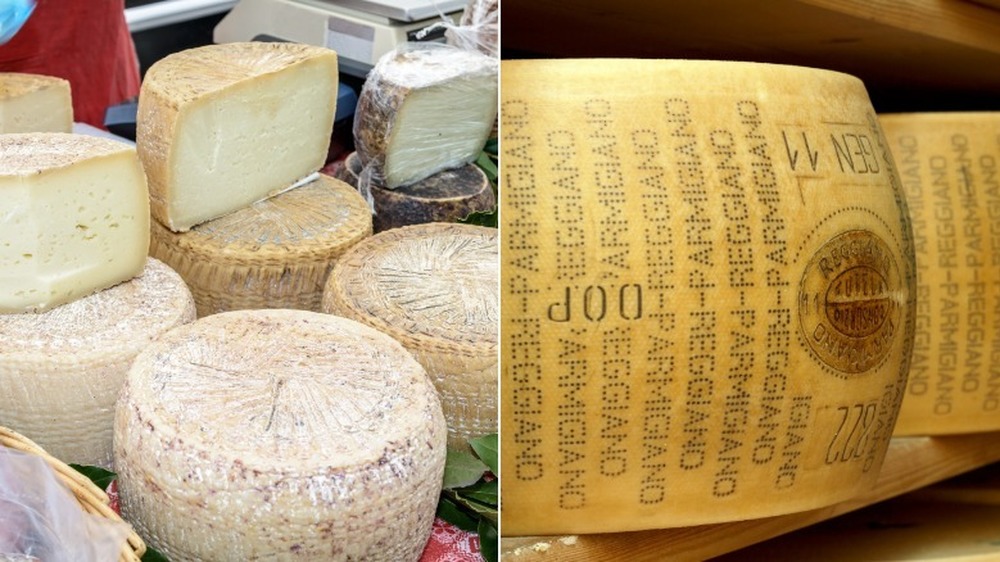This Is The Real Difference Between Pecorino And Parmigiano Reggiano
Cheese is one of those universal foods that everyone can agree makes things taste that much better (what would pizza and pasta be without cheese?). When you step into the cheese section at your local supermarket or specialty store, you are greeted with a symphony of cheeses from different parts of the world. You'll see names like Gouda, Gruyère, Brie, Camembert, Pecorino Romano, and Parmigiano Reggiano.
While the first few cheeses are known to be distinctive in terms of look and taste, many oftentimes believe that Pecorino Romano and Parmigiano Reggiano are the same (hey, they're Italian, so why wouldn't they be similar). But, as My Recipes explains, their similarities are few and far between when put up against each other in a side-by-side comparison. The publication cites that the two delectable cheeses are anything but interchangeable as they both have stark differences that set them apart, not only from each other, but from cheeses around the world.
For starters, Pecorino and Parmigiano Reggiano are made using milk from different animals
The biggest difference between the two cheeses, according to Epicurious, is that they both come from two distinctive animals. Parmigiano Reggiano, which is granular and complex flavored, is created using cow's milk, while Pecorino Romano, which is saltier, tangier, and stronger, is created using sheep's milk. To make Parmigiano Reggiano, it needs to be made within the two Northern Italian regions of Emilia-Romagna (home to the city of Parma) or Lombardy (specifically in Mantova), Vine Pair cites. Pecorino, on the other hand, is made on the island of Sardinia, in the central region of Lazio, or in Grosseto, according to My Recipes.
Where Pecorino Romano ages anywhere between five to eight months, Parmigiano Reggiano needs to be aged for no less than 12 months to three years, Spoon University states. Despite all the differences, both cheeses do have some similarities. For one, both go through a rigorous certification process to ensure that they are created using the best ingredients and the highest possible standards, per Epicurious. Both cheeses need to be certified by the Denominazione di Origine Protetta (which translates to Protected Designation of Origin or DOP), My Recipes cites. Another similarity that they both contain rennet, an enzyme that helps with the process of creating curd, and is something that vegetarians cannot eat.
While the cheeses look quite similar, true Parmigiano Reggiano will have the name stamped on its rind. Per Spoon University, Pecorino will be a white cheese that often has a black and waxy rind.

